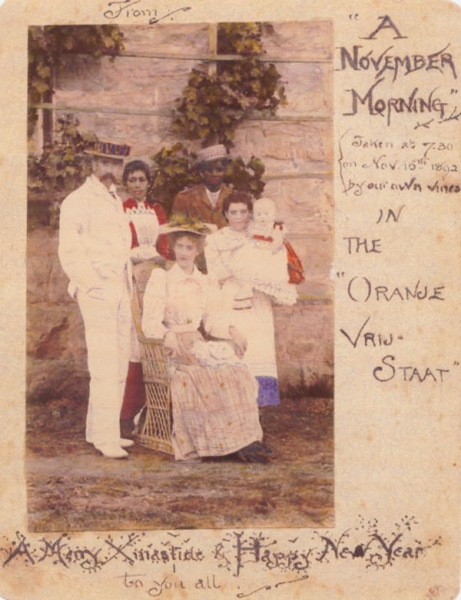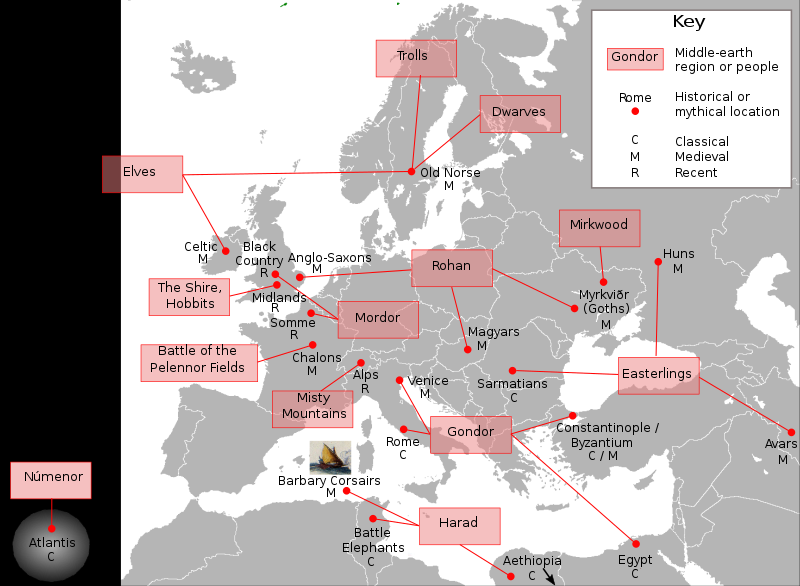
130 years ago, on January 3, 1892, in the city of Bloemfontein, the capital of the then South African Orange Republic, the firstborn was born in the family of the governor of the Bank of England. Actually, the mother was expecting a girl and even chose the name for her daughterRosalind. But as soon as the boy was born, the name was corrected: Ronald. The father insisted that this name be supplemented with two others. John — in honor of his grandfather and Ruel in honor of an old friend of the family. The whole comes out John Ronald Ruel.

Tolkien in the 1940s. Photo: Commons.wikimedia.org
It must be assumed that such a combination of names in English families is not particularly rare. But for many people, there is only one John Ronald Ruel. Tolkien. The author of “The Lord of the Rings”, “The Hobbit” and “The Silmarillion”, as well as many poems and fairy tales. A little less often they remember that he was a professor of philology, a linguist and an expert in ancient languages. And it is very rare to talk about his special attitude to Russia and the Slavic world in general.

An 1892 Christmas card with a color photograph of the Tolkien family from Bloemfontein, sent to relatives in Birmingham, England. Photo: Commons.wikimedia.org
Here it would be appropriate to quote almost the most common tale about how, in fact, one of the works that turned the world of children’s literature, and perhaps the world of literature in general, was born. We are talking about «The Hobbit», which subsequently led to the creation of the monumental «Lord of the Rings ». So, what was the beginning of it? Everything seems to be simple. Tolkien, they say, checked the exam papersessays, among them came across a blank sheet, and dear professor neither with that with this took yes and wrote: «There was a mink in the ground, and a hobbit lived in the mink. It is assumed that after that everything else was solved as if by itself. In fact, the quote is short. Tolkien, after telling his trademark tale, made one very important remark: “Names, yes, and words in general, always pull some kind of story behind them.”
Russia and the Slavs don’t seem to be here. But exactly what «like would». The fact is that Tolkien still took up the study of Slavic languages. True, with a deplorable result: “I have tried many languages, but the time that I once spent trying to learn Serbian and Russian did not give any practical results, leaving only a strong impression of the structure and aesthetics of words.”
And that’s something. And even a lot. «A strong impression» was not times later, getting out in the most unexpected places, and it got out so seriously and «pulled for itself» so characteristic Slavic motifs that the author, who created «Mythology for England», was forced to mercilessly stop this matter or at least smooth it out. So, researchers of the worldTolkien noted that in the original language of the elves, which the professor almost entirely copied from Finnish, the word “velike” got mixed up. That is «great». Then Tolkien subjected it to a rigid adaptation, leaving only the root -bel-. But it’s still nice that the name Beleg and the name of the Great Sea Belegaer from the epic Silmarillion are of Russian origin.
Similarly, the absolutely Russian character of the Hobbit was not lucky. His name — Beorn — originally sounded like Tolkien: «Medwed». This completely and completely described his main skill: the ability to turn into a huge black bear. Even the whole chapter, in which it was told about how Gandalf, the dwarves and Bilbo were staying with the werewolf, was also called “Medwed”. But for the sake of the integrity of the picture, such a beautiful name had to be sacrificed: «Medwed» «pulled»for a clearly superfluous Russian trace in Middle-earth. Which should be looked for in the Russian fairy tale “Ivashko-Medvedko”: “Here Ivashko-Medvedko got angry and began to beat Baba yaga. Beat her to a pulp, cut out three belts from her back and locked her up. Cruel Russians? Perhaps. But let’s compare it with Tolkien: “Everyone went out into the courtyard and, going around the house, saw a goblin’s head planted on a stake behind the gate, and a little further away the skin of a varg nailed to the trunk of an oak tree. Yes, Beorn was merciless with his enemies!»

Classical, medieval and Slavic influences on the geography of Middle-Earth. Locations are given approximately. Photo: Commons.wikimedia.org
The fact that the name of Radagast, one of the magicians who arrived in Middle-earth, is of Slavic origin, is generally known. Indeed, Tolkien, being a Catholic, was clearly familiar with the works of Adam of Bremen, in particular with his work “Acts of the Archbishops of the Hamburg Church”, where he writes that the Slavs living between the Elbe and the Oder have a city in which there is a large temple dedicated to the god Radegast.
But Tolkien decided to leave Radagast and not to subject him to any adaptation. The reason is simple. This magician «pulled » for a history of complex Germanic-Slavic relations, which quite logically «fit » into the world of Middle-earth. And more specifically — shed light on the origin of the Rohan people. Those very Horsemen who effectively came to the aid of Gondor in the battle on the Pelennor fields and generally occupy a special place in Tolkien’s legendarium, being in some way his favorites.
Thomas Shippy, a researcher of Tolkien’s legacy, is sure that these are the Anglo-Saxons. But the Anglo-Saxons, who have not yet moved to England. Moreover, the Anglo-Saxons, who turned not to the west, but to the east: “To the German plains and the expanses of the steppes stretching beyond them… Creating the Land of Horsemen, Tolkien, of course, remembered the great and forever lost literature of the Goths, about the close relatives of the Angles who fell prey to disasters and oblivion on the plains of Russia…»
Shippy is being a little sly. The Gothic people did not experience any special disasters on the plains of Russia. Rather, on the contrary: the Ostrogoths in the Dnieper managed to create a huge power. And the most interesting thing about her is that she wasn’t actually Goth. Rather, Gothic-Slavic. Moreover,in some localities, the Slavs even prevailed numerically, and at the later stages they almost assimilated the Goths entirely and completely, as evidenced by the names of some kings of the Gothic power Vitimir, Vidimer, Valamir, in which there is nothing Germanic.
It was here that the Germans did not just become Slav, but became the very people of the steppes, Horsemen who decorated their helmets with horse tails, borrowing this business from the nomads.
Peter Jackson, who filmed the Lord of the Rings and the Hobbit, judging by everything, thoroughly familiarized himself not only with Tolkien’s works, but also with research on his work. So those who noticed obvious Slavic motifs in Rohan’s film image are absolutely right. This is exactly how one should understand the carved wooden architecture of the Horsemen people, their squad culture, their mounted lava attack with short spears, their helmets with plumes of horse tails, their tradition of burying their fallen under mounds and the whole entourage in general.
Another thing is that Peter Jackson inserted some Russian motifs independently of Tolkien’s legacy. So, the idea of the final duel of the dwarf Thorin Oakenshield and the orc Azog the Defiler on the ice of a frozen lake was suggested to him by the artist Alan Lee. Illustrator of Tolkien’s books and at the same time a big fan of Sergei Eisenstein, in particular his film Alexander Nevsky»…


